Meet Han Jo Kim, MD: Spine Surgeon NJ

Dr. Kim, spine surgeon NJ, a New York City native, is a Spine Surgeon at HSS, specializing in cervical spine and scoliosis surgery. He earned his medical degree from Columbia University College of Physicians and Surgeons. He then completed the coveted Hospital for Special Surgery Orthopaedic Residency, followed by a spine fellowship specializing in Adult and Pediatric Scoliosis and Cervical Spine Surgery at Washington University in St. Louis, Barnes Jewish Hospital. He was hired to come back to the Hospital for Special Surgery (HSS) in New York for his spinal deformity and cervical spine surgery expertise.
Contact Us Today: Spine Surgeon NJ
Dr. Han Jo Kim Spine Surgeon NJ:
Dr. Han Jo Kim, a Local Spine Surgeon, provides his patients with quality-based healthcare services, specializing in cervical spine and scoliosis surgery. Dr. Han Jo Kim approaches each patient differently based upon their personal history. He will perform surgery when he sees best with techniques tailored specifically to each patient to optimize outcomes. If you need the spine surgeon NJ, contact us today. We can help with your specialized needs and capabilities.
Services Our Spine Surgeon NJ Offers:
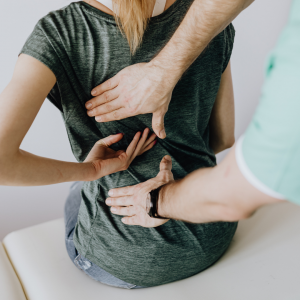
At the office of Han Jo Kim, there are many services and staff members there to help guide our patients to full recovery. Treatment plans and routine procedures are provided to each patient that is made for them. Our number one priority is to ensure we have all your medical history by working with your previous doctors to ensure a complete and efficient treatment plan for you. After a thorough evaluation, we will then proceed with the best service that will bring you to full recovery.
Cervical Spine Surgery:
- When to receive Cervical Spine Surgery: After a spine surgeon NJ complete evaluation of your pain history, Dr. Han Jo Kim then provides you with options. Keeping track of the conditions you are experiencing, including neck pain, tingling, numbness, weakness, nerve impingement, or damage, is very important.
- Causes: Dr. Han Jo Kim will provide surgical service spine surgeon NJ depending on the problems you’re experiencing, such as degenerative disc disorder, trauma, instability of the spine, and cervical deformities.
Scoliosis Surgery:
- Scoliosis has warning signs that include: uneven shoulders, the one-shoulder blade appears more prominently than the other, an uneven waist, one hip is higher than the other.
- Pediatric Scoliosis: Since scoliosis is commonly found in children before puberty, it is very important to treat this at an adolescent age to combat the problem.
- Adult Scoliosis: Some cases of scoliosis are found in the Adult years instead of the adolescent years. After spine growth is complete, Adult Scoliosis can occur. Some symptoms to stay aware of are leg pain, weakness or numbness, loss of height, uneven alignment of the hips or pelvis, and constant back pain. If you are experiencing any of these symptoms, contact us, and we can evaluate if an operation is necessary.
- Our main goal: If we see that a back brace is not reducing pain or discomfort, then Scoliosis Surgery is recommended. Post-surgery, we want our three main goals to spine surgeon NJ succeed. This includes stopping the progression of the spinal cord, reducing the curve, and maintaining your overall trunk balance.
- For more information about Scoliosis surgery or the types of surgeries Dr. Han Jo Kim performs, check out our website and contact our office.
Spinal Deformity Surgery:
- Spinal deformities Treated: Dr. Han Jo Kim has years of experience treating common and rare spinal deformities. We will evaluate and see if surgery is the best option for you. We may encourage surgical services if you have Scoliosis, Kyphosis, Lordosis, or growths, herniated discs, or other deformities.
Types of Spinal Deformity Surgery:
- Decompression/Laminectomy
- Fusion
- Spinal Reconstruction
Causes of Lower Back Pain:
Lower back pain is very common, but there are many different causes to a patient’s lower back pain, some more severe and some not.
- Strains: With too much activity on your lower back, it can cause your muscles to tear and ultimately stress.
- Disc injury: A herniated disc was when your disc slipped or ruptured. This can happen when you twist or over lift something.
- Sciatica: This can be caused by a herniated disc. While this can cause pain in your legs or feet, a sensation like pins and needles.
- Spinal stenosis: causes symptoms such as numbness, cramping, or weakness, due to degeneration of your discs.
- Abdominal spine curvatures: Such as Scoliosis, Kyphosis, and Lordosis. These can be diagnosed in adolescent years. These cause a lot of pain and poor posture in individuals.
- Other conditions: Other conditions cause lower back pain such as Arthritis, Fibromyalgia, Spondylitis, and Spondylosis.
- Pregnancy, endometriosis, ovarian cysts, uterine fibroids, cancer, kidney, and bladder problems are all causes of lower back pain.
Contact Our Spine Surgeon NJ
Dr. Han Jo Kim is a spine surgeon in nyc and is here to ensure that all his patients are provided with the best and most efficient services. Our main goal is a full recovery and freedom from the pain. If you need the spine surgeon NJ, contact our office, and we will set up an appointment and consultation with you! We can help with your specialized needs and capabilities.
Lumbar strains are one of the most common causes of back pain. More specifically, they can account for around 70% of lower back pain. A lumbar strain consists of the ligaments in the back being torn from their attachments. This results in spasms or soreness in the lower back. At Dr. Han Jo Kim’s office, we offer several treatments to treat lumbar strains and relieve lower back pain. Our spine surgeon NJ is prepared to select the best treatment plan for you and inform you how to avoid further back injury.
Lumbar Strain Causes
Certain activities or actions can damage the tendons and muscles in the lower back, also known as a lumbar strain. Causes of the injury consist of, but are not limited to:
- Bending or crouching incorrectly for long periods
- Extreme physical exertion
- Falling
- Lifting heavy objects
Lumbar Strain Risk Factors
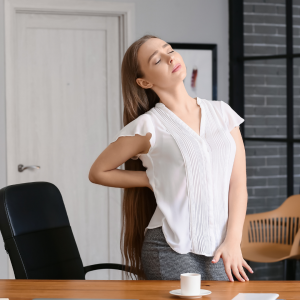
Risk factors can increase your chances of obtaining a lumbar strain. It is important to be aware of the risk factors of a lumbar strain to avoid lower back pain as much as possible. Risk factors include the following:
- Emotional stress
- Excessive lower back curvature
- Forward-tilted pelvis
- Improper posture
- Obesity
- Severe Cough
- Tight hamstrings
- Weak back or abdominal muscles
Symptoms of a Lumbar Strain
The symptoms of a lumbar strain will vary from person to person. The symptoms of a lumbar strain may be confused with other back problems, so it is important to see our spine surgeon NJ for a proper diagnosis. Symptoms may last for a few days with proper treatment or could not completely resolve for weeks or months without treatment. These symptoms include:
- Sudden pain around the lower back or upper buttocks
- Muscle spasms resulting in more extreme pain
- Pain associated with actions like bending, stretching, coughing, or sneezing
At-Home Care
If you are looking to ease a less severe lumbar strain at home, try the following remedies to see if pain lessens:
- Apply an ice pack for 15 to 20-minute intervals.
- After the first few days, try heat for 15 minutes at a time to ease the pain.
- Use over-the-counter medicines to help control pain and swelling, such as aspirin or ibuprofen.
If your pain is still persistent, come to our spine surgeon NJ for further treatment.
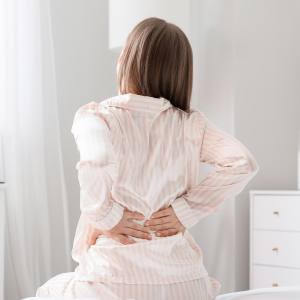
Lumbar Strain Diagnosis
Our healthcare specialist will perform several tests, along with an assessment of your medical history, to determine if you are suffering from a lumbar strain. Some of these diagnostic tests will be performed through:
- Computed tomography scan (CAT scan)- Shows details of the bones, muscles, fat, and organs.
- Electromyogram (EMG)- Evaluates nerve and muscle function.
- Magnetic resonance imaging (MRI)- produces detailed images of organs and structures within the body.
- Radionuclide bone scan- Shows blood flow to the bone and cell activity within the bone.
- X-ray- Takes images of internal tissues, bones, and organs.
Spine Surgeon NJ Lumbar Strain Treatment
Our back specialist will decide on a treatment plan depending on the symptoms of your lumbar strain. Treatments such as anti-inflammatory medicine or spinal injections provided by our spine surgeon NJ may be recommended to relieve pain and inflammation in more serious cases of a lumbar strain. In less severe cases, the following treatments can be advised:
- Abdominal muscle exercises
- Ice packs or heat and compression
- Rest
- Stretching and strengthening exercises to heal lower back
Lumbar Strain Recovery
Depending on the severity of your lumbar strain and the form of treatment recommended, your lumbar strain can last anywhere from a couple of days to weeks. Everyone heals at different rates. Once your back pain is gone, our doctor will want to see you again to provide tips and exercises for prevention in the future.
Avoiding Lumbar Strain Spine Surgeon NJ
Some tips that can refrain you from straining your lower back or furthering the injury include the following:
- Adopt good posture
- Avoid sleeping on your stomach
- Bend at the knees, not the waist
- Exercise and stretch back muscles regularly
- Lose weight if you are overweight
- Stop or ease physical activity if you start to feel low back pain
Contact Spine Surgeon NJ
Our staff at Dr. Han Jo Kim’s office cares about our patients and their well-being. To schedule an appointment to treat your lumbar strain or learn more about back problems, contact our office. Our spine surgeon NJ is dedicated to his craft and wants to provide you with the proper treatment you need to relieve back pain from a lumbar strain. Contact us today to help with your back injury.

Healthy spines have a natural curve from front to back. The lumbar spine, or lower back, has a slight forward curve whereas the thoracic spine, or the upper back, has a gentle backward curve. These curves create your spine’s S shape and are designed this way to help absorb the shock from everyday activities. Lordosis, or swayback, is when there is an excessive inward curve of the spine affecting the lower back. As a result, there can be excessive pressure on the spine, which leads to pain and discomfort. It can also affect your ability to move if it’s severe and left untreated. If you are experiencing pain or discomfort from this particular spine deformity, look no further than our spine surgeon NJ. Dr. Han Jo Kim has the expertise, care, and knowledge to help determine the right plan for your particular condition. Contact us today to learn more!
Causes of Lordosis
Lordosis can affect people of all ages, but certain conditions can increase your risk of lordosis. These include:
- Spondylolisthesis: a condition of the spine where one of the lower vertebrae slips forward onto the bone beneath it. It is usually treated with therapy or surgery.
- Achondroplasia: a common type of dwarfism.
- Osteoporosis: a bone disease that causes a loss of bone density, which contributes to your risk of fractures.
- Osteosarcoma: a bone cancer usually developing in the shinbone, near the knee, the thigh bone near the knee, or the upper arm bone near the shoulder.
- Obesity: puts people at a greater risk of more serious diseases like type 2 diabetes, heart disease, and even cancer.
Types of Lordosis
Lordosis in the Lower Back
This is the most common type. To determine if you have this condition, lie on your back on a flat surface. There should be space between your back and the surface. An Extreme curve will reveal a visible C-like arch when standing. From the side, the abdomen and buttocks will both stick out.
Cervical Lordosis
This is when your spine near the neck doesn’t curve as normally as it should. Meaning:
- There’s too much of a curve
- The curve is running in the wrong direction
- The curve has moved to the right
- The curve has moved to the left
Symptoms of Lordosis
Muscle pain is the most common symptom of lordosis. An abnormal spine curve causes the muscles to be pulled in varying directions, which results in tightening or spasms. Cervical lordosis extends the pain to the neck, shoulders, and upper back. It can also cause limited movement in the neck and lower back.
Some other symptoms include:
- Numbness
- Tingling
- Electric shock pains
- Weak control of your bladder
- Weakness
- Difficulty maintaining muscle control
How is it Diagnosed?
You will provide your doctor with a medical history, they will perform a physical exam, as well as ask about the symptoms you are experiencing to determine if you have lordosis. During the exam, you will be asked to bend forward and to the side. This will check if:
- The curve is flexible
- Range of motion
- Your spine is aligned
- There are any abnormalities
Questions they may ask include:
- When did you notice the excessive curve in your spine?
- Is the curve getting worse?
- Is the curve changing shape?
- Where is there pain?
Once causes are narrowed down, tests would be ordered like an x-ray to look at the angle of the lordotic curve. Based on the angle in comparison to other factors such as height, age, and body mass.
How to Treat Lordosis
Treatment for Lordosis is dependent upon the severity of the case as well as other symptoms.
Treatment options include:
- Medication, to reduce pain and swelling
- Daily physical therapy that will strengthen muscles and range of motion
- Weight loss to help posture
- Braces (for children and teens)
- In severe neurological cases, surgery
Preventative Measures
Though there aren’t necessarily guidelines to prevent lordosis, there are some exercises to help maintain good posture and spine health. These exercises include:
- Shoulder shrugs
- Neck side tilts
- Yoga poses like the Cat and Bridge pose
- Leg raises
- Pelvic tilt on a stability ball
Prolonged standing with no breaks can cause changes in the curve of your spine. So, try to take breaks if you tend to stand for a long period due to work or habit. And if sitting for a long period, make sure your chair has sufficient back support.
Local Spine Surgeon NJ
Dr. Han Jo Kim and his staff understand that even the slightest deformities of the spine can greatly impact your quality of life. With his years of experience, our spine surgeon NJ County NY, Dr. Han Jo Kim is well versed in treating both common and rare forms of spine deformity. He will work with you and your physician to determine if surgery is the best option for your case. Contact us today to learn more!
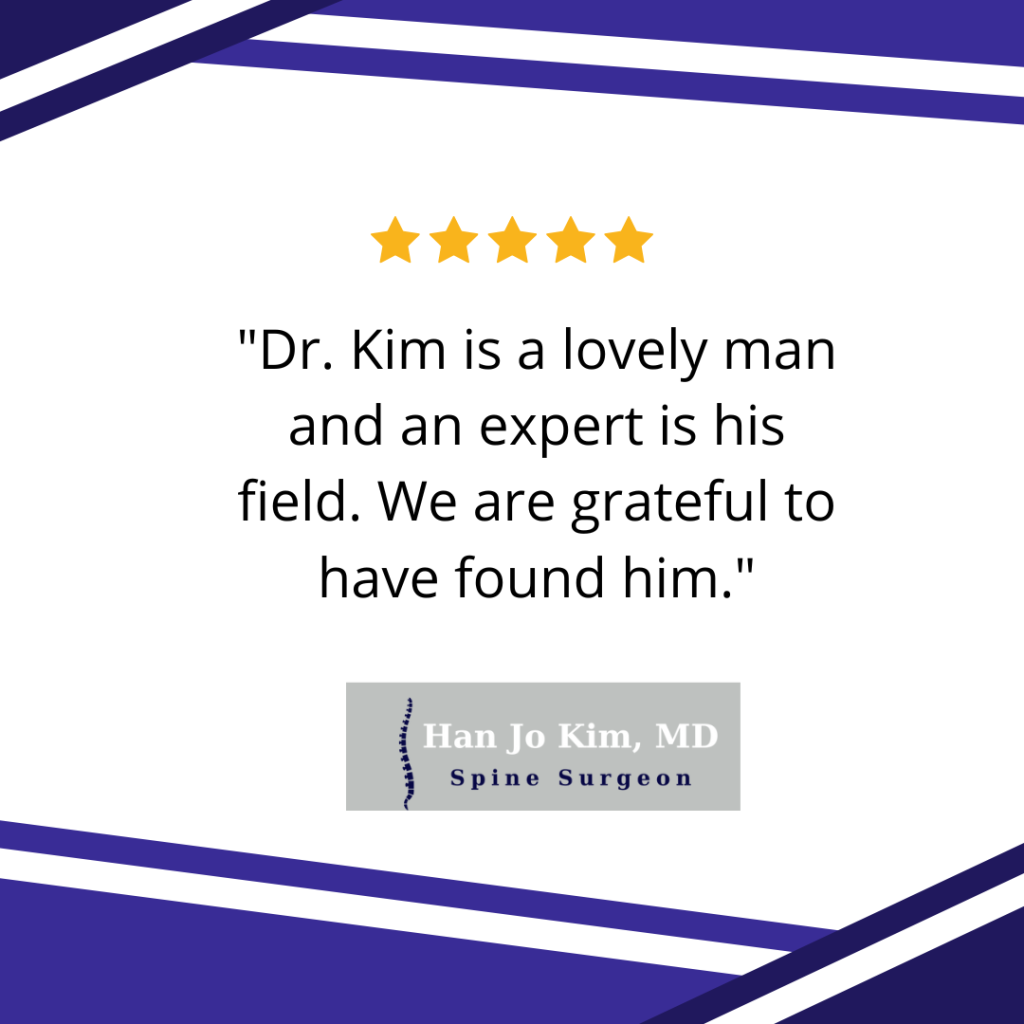
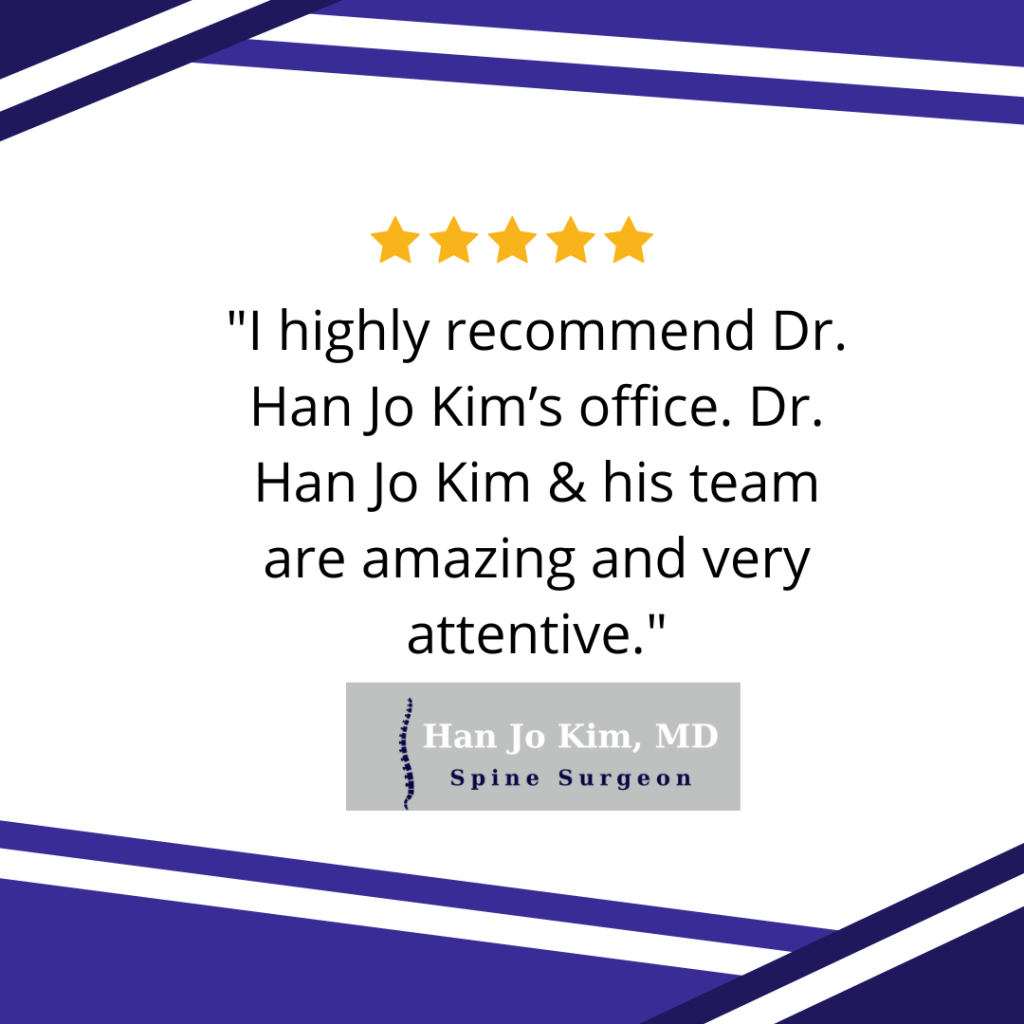
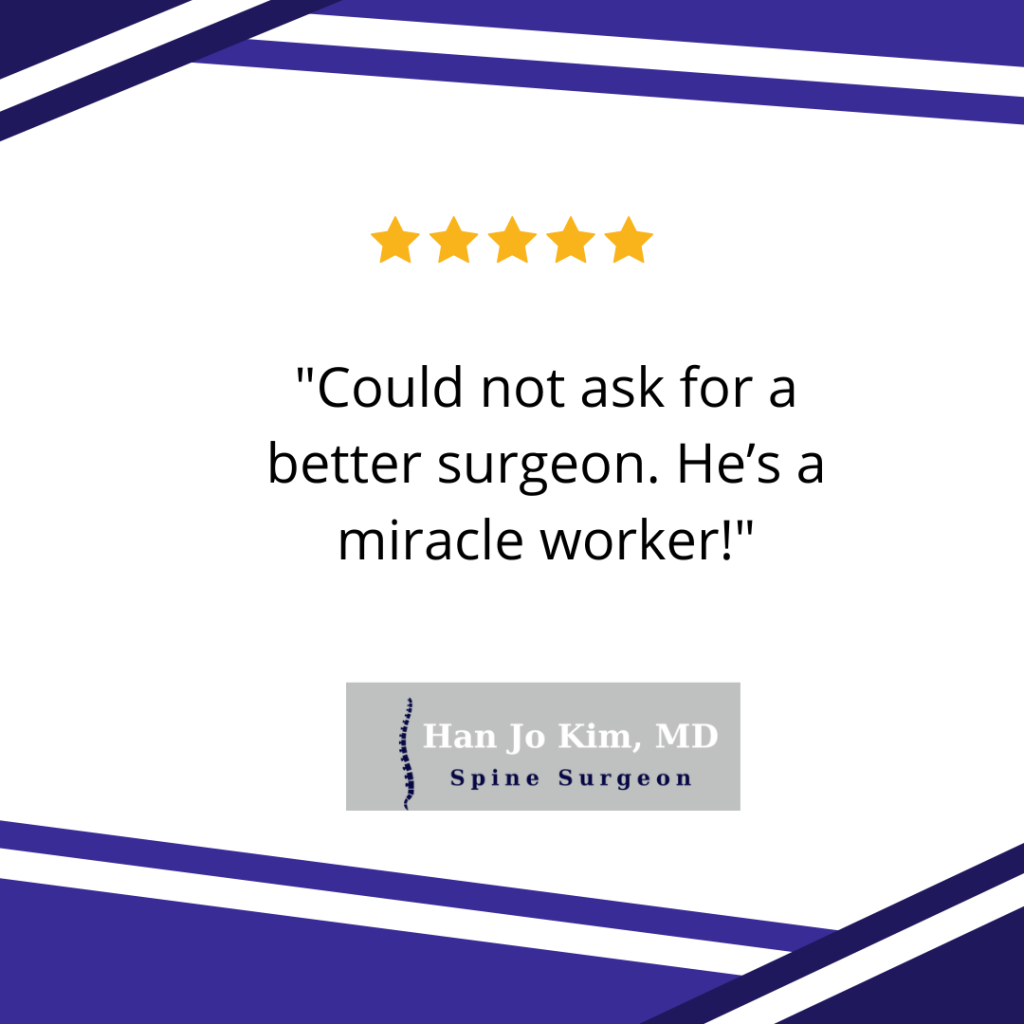

Many people suffer from back pain, whether in the upper or lower back. Back pain can sometimes be the result of weak core muscles. That is why core strength does more to your body than just giving you abdominal muscles. Developing strong core muscles can help strengthen your back and reduce back pain. It is recommended to visit our Spine Surgeon NJ for your back pain needs. Dr. Han Jo Kim can evaluate your back pain and recommend a personalized course of treatment.
How Does Your Core Strengthen Your Back?
The core muscles consist of the front abdominal muscles, the muscles alongside your body, a deep muscle that wraps around the front, and some muscles in the back. If your core muscles are weak, the other structures supporting your spine have to work harder to support your back. If you work hard to strengthen your core muscles, then you can strengthen your back and get relief from back pain and will be less likely to obtain a back injury in the future.
How To Strengthen Your Core With Exercise
Core exercises can be used to strengthen your core, eventually leading to the relief of back pain. Exercises should be repeated frequently, but allow your body to rest too. Some examples of exercises you can do to strengthen your core muscles include the following:
Elbow Plank:
- Lie on your stomach with the rest of your body flat.
- Place your elbows on the floor with your arms making a 90-degree angle to hold you up.
- Make sure your elbows are close to the sides of your body, and your forearms are on the floor with your fingers interlaced.
- Use your core muscles to hold this position for 30 seconds at a time.
- Repeat this exercise three times in a row with resting in between.
- For efficient results, do this exercise once a day.
Abdominal Crunches:
- Lie flat on your back with your knees bent. Your feet should be flat on the floor, hip-distance apart.
- Place both hands on the back of your head with your elbows open wide.
- Use your abdominal muscles to raise your head, neck, and upper back off the floor as you exhale.
- Lower your upper body to the ground as you inhale.
- Do three sets of 10 abdominal crunches every day to strengthen your core.
Pushups:
- Lie on your stomach with your hands on the floor a little higher than where your shoulders are.
- Lift your body, so you become evenly balanced on your hands and feet.
- Lower yourself to the floor until your elbows are at a 90-degree angle. Remember to keep your back straight.
- Your arm, upper back, chest, and abdominal muscles should be used while doing pushups.
- Do three sets of 10 pushups each day.
For more recommendations of exercises that can help strengthen your core muscles and help relieve back pain, see our Spine Surgeon NJ.
Other Techniques to Strengthen Your Core
Preventing back pain by strengthening your core through exercise can take some time. Other techniques can also help aid the process of strengthening your core. Examples of these techniques include the following:
- Losing weight
- Stretching regularly
- Getting enough sleep
- Incorporating proper techniques when exercising
Can You Injure Your Back While Strengthening Your Core?
Exercises that are performed incorrectly can put you at risk of injuring yourself. Therefore, it is possible to worsen your back pain when strengthening your core if done inaccurately. The best way to keep your body safe when doing physical activity is to do exercises with caution and stop if you feel too much discomfort. It is, however, usual to feel a sense of soreness while performing exercises and afterward. Feeling soreness means you are performing the exercise correctly and using your muscles.
When To Contact a Doctor
If any of the following problems occur, reach out to our Spine Surgeon NJ:
- Your pain has been lingering for longer than a month.
- Your pain is getting worse.
- Your pain wakes you up from sleep at night.
- Your back pain is radiating down your legs.
- One of your legs is becoming weak.
Dr. Han Jo Kim – Spine Surgeon NJ
If you are experiencing any back pain that makes doing daily tasks difficult, consider seeing our Spine Surgeon NJ. Dr. Han Jo Kim specializes in treating back pain issues and coming up with treatment plans for his patients. Contact our office to get in touch with our specialist and find out how to live a pain-free life again.
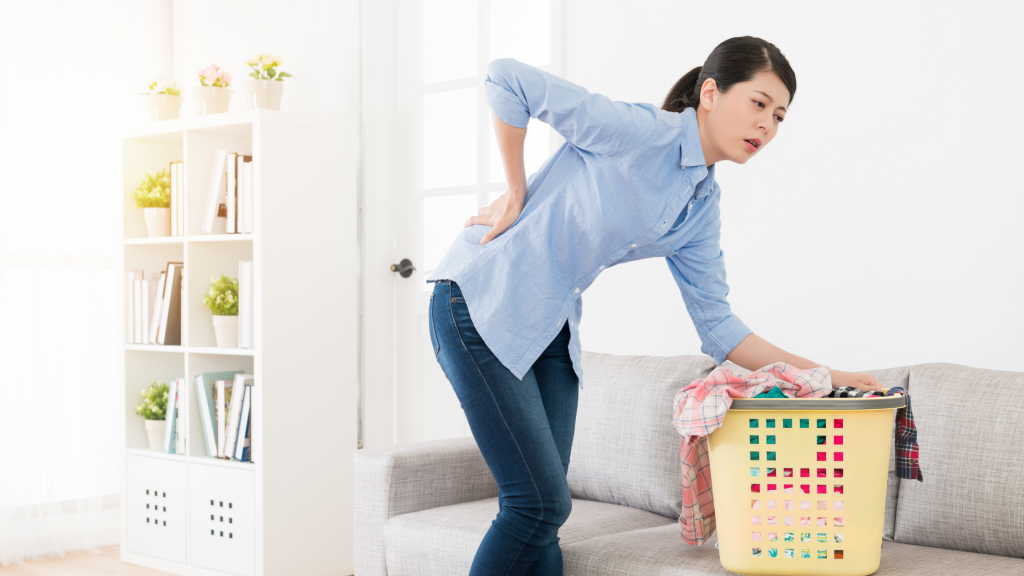
If you are in need of an Spine Surgeon NJ for a severe herniated disc that is causing you immense pain, Dr. Han Jo Kim is here to help you. Contact us today to learn more about how we can treat your pain.
A slipped disc could be a fragment of the disc nucleus that’s pushed out of the annulus, into the canalis vertebralis through a tear or rupture within the annulus. Discs that become herniated typically square measure in associate degree early stage of degeneration. The canalis vertebralis has restricted space that is insufficient for the nerve and therefore the displaced slipped disc fragment. Because of this displacement, the disc presses on spinal nerves, usually manufacturing pain, which can be severe. If you are experiencing this pain, consider Dr. Han Jo Kim as your specialist.
Causes
There are many potential causes of a herniated disc. It could be preventable but could also come genetically from growing. Be sure to visit our Spine Surgeon NJ and we will be able to help you. Here is a list of possible causes:
- Impact
- Whiplash
- Incorrect movement
- Dehydration
- Stress and tiredness
- Growth
Symptoms
Symptoms can vary greatly depending on the size of the herniation of the disk. And especially if the disc is not sitting near a nerve at all, you may feel little to no back pain. However, if it is sitting on a nerve, then there could be great pain or even numbness in the area that the nerve travels to. This could cause pain in the arm back, foot or leg. You could experience muscle weakness or spasms. Leg numbness, pins and needles, and uncomfortable tingling and burning. If you are experiencing these symptoms, contact Dr. Han Jo Kim today!
How Painful Is It?
In most of the people with herniated discs, the pain spreads over the buttocks and goes down the rear of 1 thigh and into the calf. Some individuals have pain in both of your legs. Some people’s legs or feet feel numb or tingly. The pain from a slipped disc typically is worse after you work out and become active and gets higher after you start resting.
Treatment Methods
Not every disc needs intervention. But, when it is needed common treatments are medication, physical therapy, and surgery. The medications that are usually used are nonsteroidal anti-inflammatory drugs. This will relieve pain, decrease inflammation, and reduce any fever. Physical therapy treatments such as chiropractic treatment and stretching will help to mobilize you. Lastly, spinal surgery will help to correct the abnormalities of the spinal cord and surrounding bones. Dr. Han Jo Kim, an Spine Surgeon NJ will be able to perform these practices to help you feel as good as new!
Exercises
Good Mornings
In this exercise, stand tall with your feet shoulder width apart, and eyes forward. Then, you slowly bend over, keeping your back straight, as if you had a glass of water standing upright on your back. You will keep your knees slightly bent, and lower your back to about a 90 degree angle. Repeat this exercise for 10 reps and continue for 3 sets. You should feel this exercise in your hamstrings and lower back.
Upright Row With Resistance Band
In this exercise, stand tall and upright and wrap the band around a pole or another stable object that will sustain your weight. Next, grip the band with both hands. With both elbows parallel to the floor, slowly bring your arms close to your body, extend, and repeat. While performing this exercise, remember to keep your shoulders pinched and eyes forward. Avoid slouching as well as any quick jerking motions. Repeat this exercise for 10 reps and continue for 3 sets.
For more in depth explanation of these exercises with pictures and others click here
Does it Heal On Its Own?
A herniated disc usually heals on its own. You just have to make sure that you are treating it right and that you are icing and heating it and stretching it. If it is severe pain you should rest it but otherwise you have to keep it mobile and move it around. Be patient with it and if your symptoms don’t get better in a few months, then you should see Dr. Han Jo Kim, an Orthopedic Spinal surgeon Westchester NY. Click here for more information.
Contact Our Spine Surgeon NJ
While practicing good ergonomics and following the tips mentioned above should help, pain may still persist. If this is the case, we urge you to visit our Spine Surgeon NJ, so that you can get the care you need. We will work to assess your condition and determine a treatment plan that works for you. Let us help you on your road to recovery. To learn more or schedule an appointment, be sure to contact us today!
